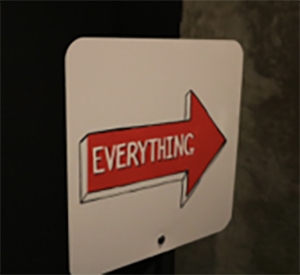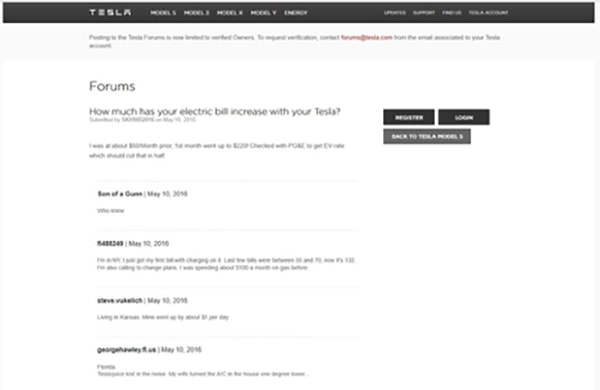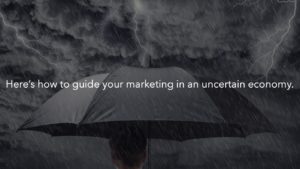Up to 30% of utility customers will be driving some form of electric vehicle (EV) – full electric or hybrid – by the end of the next decade. If you’ve been watching the evolution of the EV market, this won’t come as a surprise. But what a lot of utilities have yet to realize is that the adoption of EVs represents the single greatest opportunity in decades to change customers’ energy related attitudes and behaviors. There are multiple ways to leverage the adoption of EVs for deeper customer engagement and we are going to focus on one of the largest. Using customer EV adoption as a price signal for TOU (time of use) rates – different rate depending on the time of day. This is one of the “points of the spear” EVs provide to ultimately change the utility/customer relationship forever.
Why focus on TOU in relation to EVs? Because TOU plays a vital role in alleviating the universal problem of the Duck Curve and by capitalizing on EVs ability to open a new dialogue with customers based on the tangible value to them, TOU enables utilities to sensitize customers to how/when they use electricity. Some utilities across the country have started engaging EV customers with TOU. However, most utilities have not and many of those that have introduced TOU are missing out on taking advantage of the “halo effect” that moving EV customers to TOU rates can have on the customer’s other energy behaviors.
The halo effect is the result of customers’ new-found sensitivity to when they are using energy which can be leveraged to influence their non-EV energy related behaviors. By fostering these new behaviors, it opens the door to increased customer engagement which has the added benefit of placing utilities in a stronger position to defend against looming competition and the threat of disintermediation.
EVs Overcome Common TOU Failings
Utilities that have deployed TOU rates, are thinking about deploying them or have another tiered pricing structure that incents customers for specific time-of-day use, know the perils of communicating these rates to customers.

At ID Lab we’ve done a significant amount of RRR (residential rate reform) and TOU rate communications as well as the research to back it up. Two of the top reasons that TOU adoption is often anemic are:
- Weak price signals (not enough of a financial loss or gain to motivate customers to make a behavioral change);
- Confusing rate structures with no tangible point of comparison for customers to easily see the impact of TOU on their bills.
To these points, three years ago, when we wrote the initial TOU rate messaging strategy for the state of California with the CPUC (California Public Utilities Commission) and IOUs (Investor Owned Utilities), the price signal was one of the greatest challenges. In many cases, the positive or negative impact of these rates wasn’t big enough to spur customer action.
In addition, giving each Californian a personal and direct comparison between TOU and non-TOU rates was very difficult, costly and sometimes just not possible. Not to mention the risks of getting the individual cost estimates wrong. There are simply too many variables like seasonality, appliances, occupant behavior etc., to provide accurate individualized estimates.
Here in lies the “single greatest opportunity in decades to influence customers’ energy related attitudes and behaviors” alluded to earlier…
The Greatest Opportunity in Decades
With the increasing adoption of EVs, TOU rates and other tiered pricing programs matter more than ever to customers. However, they don’t know it yet; not until utilities enlighten them – and not the traditional ME&O (marketing, education and outreach) method of enlightenment. It requires genuine, personalized, emotionally charged/data-backed engagement.
A recent Cox Automotive study determined that car buyers are in market (actively looking to buy a vehicle) for 96 days. Another study also determined that customers will spend approximately 14hrs. 48mins. on their vehicle purchase decision. As a point of comparison a 2017 Accenture report cited that customers give their utility only 10 minutes of their attention per year.
Now consider this, a Deloitte study reports that when a consumer consider purchasing an EV, during that 14:48 hours of purchase consideration, more than 85 percent of survey respondents cited range, convenience to charge, and cost to charge as “extremely important” or “very important” considerations for buying or leasing an electric vehicle.” The third consideration – cost to charge – is the where the opportunity begins for utilities.
All of this simply says that customers are heavily invested and highly engaged with all aspects of their new EV purchase which makes them susceptible to cost-based messages and more likely to consider behavioral changes that satisfy their EV-related wants.
If we take a step back and distill everything to this point, we can conclude that:
- Customers are at a highly engaged movement (vehicle research and purchase)
- They have concerns about cost to charge their new vehicle
- Customers are actively seeking answers to vehicle charging and related costs questions
- EVs can provide a stable reference point by which to calculate future customer energy costs – the EV’s electrical requirements
From which we can extrapolate that:
- Customers are in a malleable state as they seek to understand their charging/cost options
- Utilities have a new way to tangibly, and more accurately than ever, demonstrate personalized cost savings
- Customer malleability presents the opportunity to introduce them to TOU
- New-found understanding of TOU opens the door to changing customers’ other energy-related behaviors
- A possible sustained impact on the Duck Curve through changed customer behaviors
- Incremental new revenue via cross-selling and up-selling
What to Do Now
To put it simply, use EVs as a price signal to induce customers to adopt TOU and then use their new state of openness to change their other energy-related behaviors.
Let’s go deeper… The following highlights the keys to leveraging EVs as a price signal and how to go beyond that to bring incremental new revenue to utilities.

The Right Perspective – Marathon; Not a Sprint
At current adoption rates it will take over a decade for EVs make up 40% of vehicle ownership in the US. Therefore, marketers must design and execute campaigns over several years and with long-term goals. Those campaigns must also divide into two parts: 1) aggressive acquisition for initial customer engagement and 2) a “drip campaign” to turn the customer’s new energy behaviors into sustained energy habits. Utility leadership must support the marketer’s marathon with ongoing investment and multi-year measures of success (evaluators too).
Fight to Keep Your Customer:
The cost to charge their cherished new EV was in the customer’s top three purchase consideration points so their electrical rates matter to the them more than ever. As a result, they will give their undivided attention to those that can answer to their cost-related questions. There is the “in” – the engagement opportunity. This is where utilities can step in and be the customer’s trusted energy advisor, but they have to do it before a competitor does. Yes, now is the time for utilities to take an aggressive competitive stance.
Utilities have to fight to establish their new role/relationship with customers. Utilities have to fend off competition from manufacturers, alternative energy providers and many others that want to steal away customer affinity and become their energy advisor. Thinking that customers will default to reaching out to their utility could be fatal to utilities. Competitors are proactive and because customer loyalty is generally low toward utilities, they can supplant utilities as the go-to energy advisor.
Below is one example of a manufacture setting the stage to become the customer’s energy advisor. Seemingly innocent and helpful, consider that the conversation is happening under the Tesla brand and not the utility’s. Tesla is also making inroads into energy storage, charging, solar, and many other energy related businesses. They are not the only company doing this. In short, every point of customer engagement matters:

Important Note: The relationship between a utility and vehicle manufacturers cannot become adversarial. On the contrary, there is mutual benefit to EV adoption. To remain relevant, and of value, to customers utilities must remain in control of the energy-related relationship. This has immediate and broader brand implications that will affect the entire customer relationship for years; and not just the EV portion.
Set the Hook: It’s well documented that EV charging increases monthly residential electricity bills from approximately 25% to 40%. Couple this with a simple comparison between non-TOU costs versus TOU costs and there is the initial price signal! Be there right away for customers with this simple piece of information and set the hook for further dialogue.
Use Competitive Advantage – Make it Personal: All EV manufacturers, and some utilities, already offer customers tools to estimate annual EV energy costs. It’s a relatively simple exercise for anyone to show customers how much it will cost to run their EV based on vehicle specifications, annual mileage and energy rates. However, utilities have a competitive advantage. They can use a customer’s individual rate and current usage to provide personalized cost comparisons using TOU rates and the benefits of charging during off-peak hours. This gives customers tangible and relevant points of cost comparison and undeniably strong price signals to make the switch to TOU.
Note: Some energy industry actors (e.g. regulators, commissions, community-based organizations, etc.) frown on utilities thinking in terms of “competitive advantage”. However, many of those same actors are requiring utilities to find incremental new revenue sources. New revenue sources often require that utilities compete in open markets for customers. Changing attitudes and expectations toward being competitive can be a difficult cultural transition for all involved but one that must be made. (a subject for another article perhaps).
Revenue Bonus: Take a Cue from Retailers
In retail, when a customer purchases a product or service, savvy retailers attempt to either cross-sell or up-sell the customer. Simple examples are: batteries for a new RC (self-powered) car – the cross sell or moving the customer from a base model (Model 3) Tesla to the P100D fully loaded model – the upsell.

There isn’t a single organization in the energy space that isn’t feeling pressure to find incremental new revenue. This is especially true for energy providers facing flat or declining results from core offerings, especially EE (energy efficiency) programs. EV’s can help here too by providing opportunities for both cross-selling and up-selling. Cross-sells can include products and programs such as basic charging station installation, warrantees, charging system maintenance programs and/or leasing; and new software/apps. Up-sells can include solar installations, high-speed charging stations, battery storage walls, etc.
And if that isn’t enough, customer awareness of TOU rates opens the door for messaging that motivates customers to make changes to their other high-consumption electrical consumption habits. Their new-found understanding of TOU makes them more malleable to cross-messaging for operating pools, laundry machines, HVAC systems and the old beer fridge in the garage at off-peak times – just like their EV. Moreover, the increased desire by customers to better manage those high-consumption appliances to take advantage of TOU rates opens the door to cross-sell home automation products such as connected switches, plugs, etc.
And there’s more…
ESG Bonus: Shareholder and Investor Recognition
Customers also buy EVs for the environmental benefits. Tying TOU rate programs to the use of renewable energy sources, like solar and wind, is a strong motivator for customers. Under normal engagement circumstances renewables marketing messages struggle because the cognitive distance between the customer’s behavior the ability for a utility to use more renewable resources is too great. Using EVs and TOU related behaviors shortens the cognitive distance and allows for messaging that ties the customer’s behavior to the ability to deploy more renewable energy resources.
While the positive environmental impacts are a secondary benefit, behind cost savings, for most EV customers there is a significant trickle-down benefit for utility investor and shareholder relations. Efforts tied to aiding in decarbonization, like TOU, and environmental stewardship that tangibly demonstrate a utility’s dedication to ESG (environmental, social and governance) bode well for those utilities that have made ESG commitments.
Conclusion
This article started with a bold statement – EVs represent the single greatest opportunity in decades to change customers’ energy relationships.
By this point that bold statement will have evolved into the vision for a potential bright new reality. A reality that puts utilities into their rightful role of leading whole new customer relationships and enabling them to fend off those determined to push them aside and steal away their customers.
For energy providers willing to embrace the more aggressive cross-sell and up-sell tactics used by successful retailers, EVs open the opportunity to capitalize on incremental new revenues sources, the likes of which may not come again for decades.
Considering the alternatives – behavioral programs coming under increased scrutiny by regulators and evaluators; traditional EE programs showing declining results and a worsening Duck Curve – EVs are a gift to the utilities that seize the opportunity to exploit every aspect of what they offer. It all begins with exploiting the EVs innate power to send a clear price signal.




